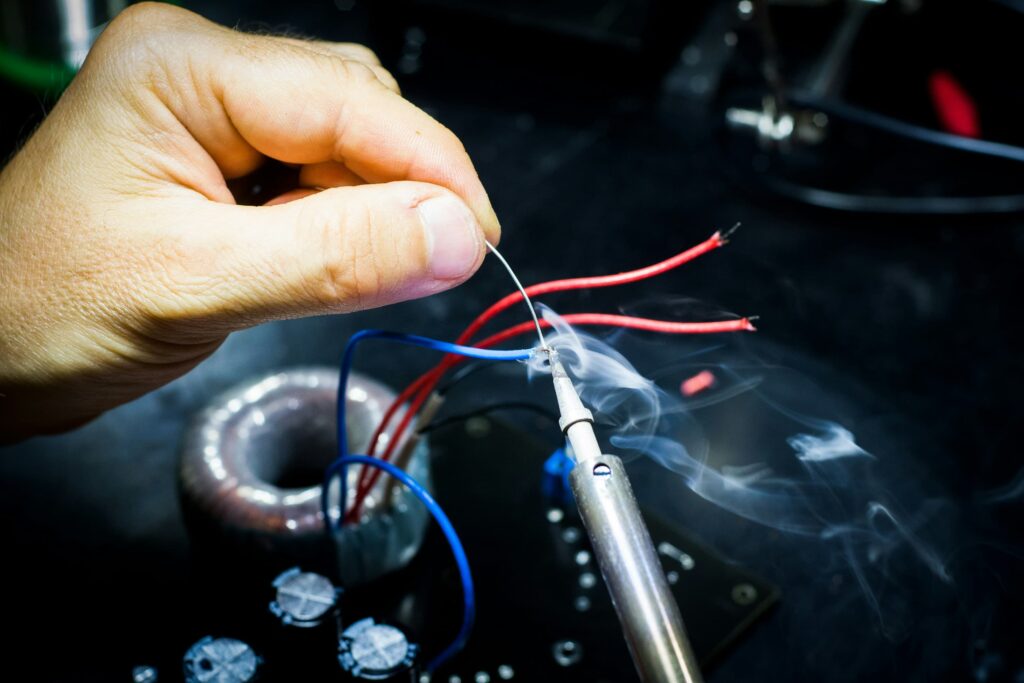
IoT Web Monitoring Development

Overview
Developing an IoT web monitoring system for an RF transmitter-receiver alarm system involves creating a web interface that allows users to monitor and control their alarm system remotely. Here’s a comprehensive development process guide covering the required components, technologies, and steps.
Key Features
Hardware Components
RF Transmitter-Receiver Alarm System: The physical alarm units with RF communication capabilities.
IoT Gateway: A device that bridges the RF system with the internet (e.g., Raspberry Pi, Arduino with WiFi module).
Sensors: Motion detectors, door/window sensors, etc.
Actuators: Sirens, lights, etc.
Software Components
Firmware: Code running on the IoT gateway to handle data transmission.
Backend Server: Manages data storage, user authentication, and communication with the front end.
Frontend Web Interface: User interface for monitoring and controlling the system.
Database: Stores user data, sensor data, and logs.
Mobile App (Optional): For added convenience and mobility.
Development Technologies
| Programming Languages | Python, JavaScript, HTML, CSS |
| IoT Protocols | MQTT, HTTP/HTTPS |
| Backend Framework | Node.js, Django, Flask |
| Frontend Framework | React, Angular, Vue.js |
| Database | MySQL, PostgreSQL, MongoDB |
| Cloud Services | AWS, Azure, Google Cloud for hosting and additional IoT services |
| Security | SSL/TLS for secure communication, OAuth for user authentication |
Development Steps
Hardware Setup
- Configure the RF Transmitter-Receiver: Set up the alarm system hardware and ensure it can communicate effectively over the RF protocol.
- Setup IoT Gateway: Connect sensors and actuators to the IoT gateway. Write firmware to handle sensor data and send it to the backend server.
Backend Development
- Server Setup: Set up a backend server using a framework like Node.js or Django.
- API Development: Develop RESTful APIs or use MQTT for real-time data transfer between the IoT gateway and the backend server.
- Database Design: Design and implement a database schema to store user information, sensor data, and logs.
Front-end Development
- UI/UX Design: Design user-friendly interfaces using tools like Figma or Adobe XD.
- Web Application: Develop the front end using frameworks like React or Angular. The web application should provide:
- Dashboard: Real-time monitoring of sensor data.
- Control Panel: Interface to arm/disarm the alarm system, configure settings, and manage sensors.
- Notification System: Alerts and notifications for different events (e.g., intrusion detected).
Integration
- Connect IoT Gateway to Backend: Ensure the gateway can send data to the backend server securely.
- Frontend-Backend Communication: Implement AJAX/Fetch API calls or WebSockets for real-time updates.
- User Authentication: Implement authentication and authorization mechanisms to secure user data.
Testing
- Unit Testing: Test individual components of the system to ensure they work as expected.
- Integration Testing: Ensure that all components work together seamlessly.
- User Acceptance Testing (UAT): Gather feedback from potential users to refine the system.
Deployment
- Hosting Backend and Frontend: Deploy the backend server and database on cloud platforms like AWS or Azure. Host the frontend application using services like Netlify or Vercel.
- DNS Configuration: Set up a domain name and configure DNS settings.
- SSL Certificate: Install an SSL certificate to secure the website.
Maintenance and Updates
- Monitoring: Set up monitoring tools to track system performance and detect issues.
- Regular Updates: Continuously improve the system based on user feedback and technological advancements.
- Security Patches: Regularly update the system to address security vulnerabilities.


